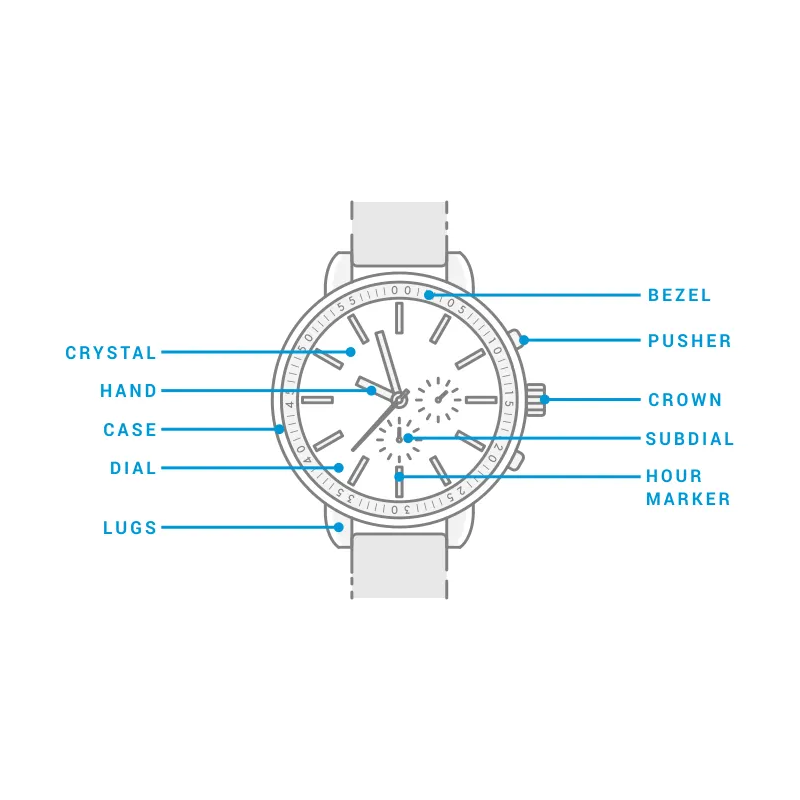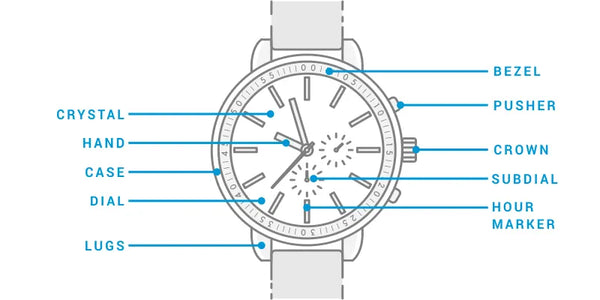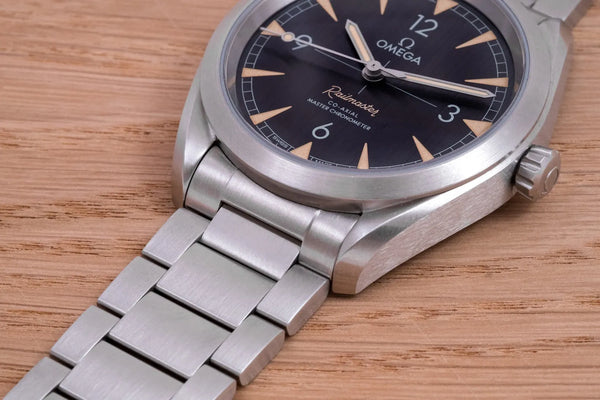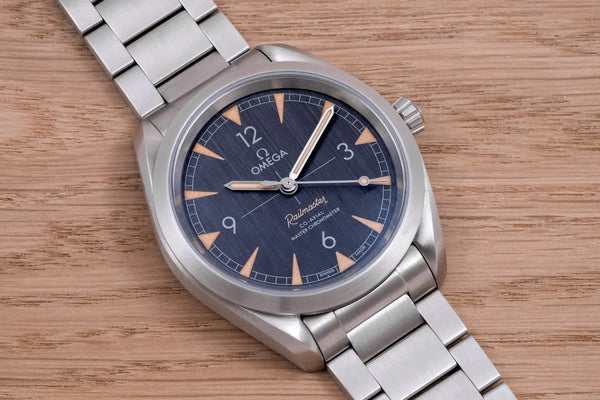
We often cover premier examples of fine watchmaking from around the globe, diving into the complications and intricacies that set each timepiece apart from anything ever before created. While tourbillon and minute repeaters are fascinating, and clearly demonstrate a level of expertise found in few places throughout the watchmaking world, they are rare in their implementation. There are, however, many parts which are inherently similar to every timepiece. While they may not be as glamorous as a hand-crafted complication, these ten parts of a watch will help you understand what to look for in a timepiece. Knowing them will help you talk the talk as you search for a new timepiece, or just stop in to have your watch serviced.

Let’s begin with the bezel. The bezel is the ring that surrounds the watch face. On dive watches the bezel may rotate to provide assistance with a measurement of elapsed time. Simpler watches may have a fixed bezel. The bezel can be simple and demarcated with numbers to show minutes or hours. Dress watches or high-end timepieces can have a bezel inlayed with precious stones such as diamonds. The key function of the bezel is to hold the crystal in place on top of the watch face.
The watch crystal is the clear portion of the watch face which protects the dial, hands, and complications. Watch crystals are typically made of glass or synthetic sapphire. The crystal acts like a window which allows a clear line of sight to the face and all the complications while protecting the delicate moving parts of the timepiece.

Photo credit: www.hodinkee.com
The bezel holds the crystal in place and both pieces sit on top of the case. Housing the internal movement and contents of a timepiece, the case is the home for the engine of the watch. Luxury watches often have a case made of gold, silver, platinum, or rhodium. Everyday watches might be constructed of ceramic or stainless steel.
On the side of the case is often a small knob, known as the crown, which is used to set the time. The crown may also serve as the winding mechanism of the spring on mechanical timepieces. When any adjustment needs to be made on your watch, the crown acts as the action piece to make change happen.
Turning the crown changes the position of the hands on the dial. The hands move over the dial, pointing to the hour and minute markers and displaying the time. Some complicated watches have one or two seconds hands which move over the dial, while others have multiple hour hands. The hands are often coated in a material to make them easier to read in low light conditions, or set in a different color than the dial to provide contrast and legibility. The dial is the part of the watch that displays the time. The dial is often a complementary color to the case and works into an overall color scheme or theme for the timepiece. The dial consists of the hour markers and hands on a traditional watch.

Photo credit: www.hodinkee.com
The hour markers are placed on the dial, usually, Arabic numerals that mark the key hour positions from one to twelve. Dress watches often feature a simpler design for hour markers with simple lines denoting the hour positions.
Lugs are the small metal pieces which extend from the case as a point to attach the watch strap. The lugs can be pronounced and bold or more decorative and intricate depending on the theme and style of the timepiece.
While the crown is the action piece for the timekeeping functions of the watch, pushers are similar to the crown and often operate complications and functions. These small buttons on the side of the case control the date complication or the chronograph function. Pushers on the opposite side of the crown are sometimes linked to more intricate complications known as repeaters, which announce the time using a series of chimes.
The subdial of a watch is a small window inset onto the dial. It often displays a secondary function or complication such as a chronograph or seconds measurement. Power meters, moon phases, and perpetual calendar complications are often displayed in subdials. Subdials can be placed anywhere on the dial, but the most popular positions are at the three, six, nine, and twelve o’clock positions.
Modern timepieces are constructed of hundreds of small pieces placed together perfectly to complete an intricate machine capable of recording time with exacting precision. While every part has a function and a name, these ten parts are the basics of all watches and will help you to better understand what you are looking at the next time you come looking for a future timepiece.

